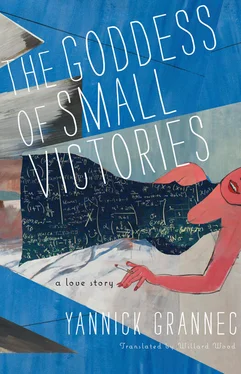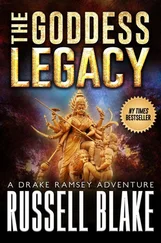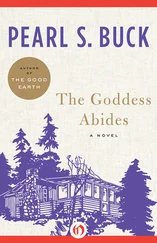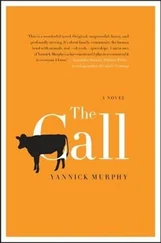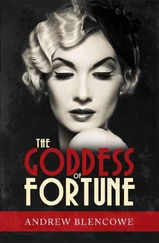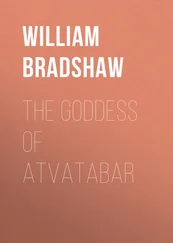32. Olga Taussky-Todd (1906–1995): a Czech-American mathematician who was a member of the Vienna Circle and a friend of Kurt Gödel. Amalie Emmy Noether (1882–1935): German mathematician known for her contributions to abstract algebra and theoretical physics. Many consider her the most important woman in the history of mathematics.
33. Hedy Lamarr (1914–2000): actress, producer, and inventor. With her friend the composer George Antheil, Lamarr patented a system for encrypting transmissions called spread spectrum frequency hopping. The technique is still used for GPS satellite navigation and Wi-Fi connections.
34. The German word Dasein brings together the ideas of being, existence, and presence. Daseinsanalyse or “existential analysis” was inspired by the Daseinsanalytik of the philosopher Martin Heidegger, who was himself influenced by the phenomenology of his mentor, Edmund Husserl. Hulbeck belonged to the New York Ontoanalytic Association, the U.S. standard-bearer for Daseinsanalyse . Gödel’s late interest in Husserl’s phenomenology is perhaps related to the investigations of his bizarre therapist. The author will not venture a two-line definition of phenomenology.
35. Huelsenbeck, one of the spokesmen for the Dada movement, called himself “the Drum of Dada.” At the Cabaret Voltaire, the Zurich nightspot where the main figures of Dada performed (Tristan Tzara, Jean Arp, Sophie Taeuber), the future psychoanalyst recited his poetry while accompanying himself on a large drum.
36. In 1951, Kurt Gödel was the first co-recipient (with Julian Schwinger) of the Albert Einstein Award, in recognition of his contributions to theoretical physics. The award came with $15,000. Von Neumann, one of the jury members with Oppenheimer and Einstein, gave a rousing appreciation of Gödel, calling him a “landmark which will remain visible far in space and time.”
37. Kurt Gödel was the first logician to receive this honor, awarded to the most eminent scientists.
38. With his friend Leó Szilárd (himself a physicist on the Manhattan Project), Einstein patented several designs for refrigerators, one of which was based on an “electromagnetic pump.”
39. Edward Teller (1908–2003), a Hungarian-born physicist, was known for his virulent anticommunism. He is credited with inventing the hydrogen bomb. In the 1980s, as pacifist as ever, Teller was one of the main supporters of Ronald Reagan’s Strategic Defense Initiative, known as “Star Wars,” the satellite-guided laser defense against Soviet nuclear ballistic missiles.
40. Einstein defied Senator McCarthy, writing in an open letter to the national newspapers: “Every intellectual who is called before one of the committees ought to refuse to testify …”
41. The FBI compiled a voluminous file on Albert Einstein. Doubtful sources advanced far-flung allegations: he had invented a robot capable of controlling the human mind; one of his sons had been taken hostage by the USSR. Spurred by J. Edgar Hoover, the immigration service pursued investigations designed to strip Einstein of his American citizenship and expel him from the United States. He remained an American citizen at his death in 1955.
42. The atomic bomb uses the energy of a nuclear fission chain reaction: the nuclei of heavy atoms (for example, uranium and plutonium) emit energy as they decay into nuclei of lighter weight. The hydrogen bomb (thermonuclear bomb) uses nuclear fusion: energy is released when hydrogen atoms are forcefully brought together to form helium. A helium atom weighs slightly less than the original hydrogen atoms, and the missing mass, according to Einstein’s equation E = mc 2, turns into energy.
43. Geeky factoid: Leibniz’s Nachlass contains an essay titled “Explanation of Binary Arithmetic, Which Uses Only the Characters 0 and 1,” written more than two centuries before the advent of the computer age.
44. A remark made by Paul Erdös, a mathematician who was a contemporary of Kurt Gödel.
45. A quote from the French mathematician Alain Connes, winner of the Fields Medal in 1982.
46. Roger Wolcott Sperry was an American neurophysiologist. He won the Nobel Prize in medicine in 1981 for his work on the connection between the brain’s two hemispheres.
47. A quote from Donald Ervin Knuth, a computer scientist and a pioneer of algorithms.
48. Leonard is here claiming to have invented the RSA cryptosystem, named after Ron Rivest, Adi Shamir, and Leonard Adleman, who first described the system in 1977. Uncrackable, it is still used today for encrypting computer traffic, from online banking to simple e-mails. The discovery of new prime numbers has become a lucrative business: $150,000 for prime numbers of 100 million figures and $250,000 for primes of more than a billion figures.
49. According to Simon Singh, The Code Book .
50. The message was decrypted seventeen years after its publication by a team of six hundred volunteers. The answer was: “The magic words are squeamish ossifrage.” An ossifrage is a raptor that breaks bones by dropping them from a great height.
51. The National Security Agency is a U.S. government agency responsible for the collection, analysis, and surveillance of communications.
52. In 1954, the Supreme Court ruled that the segregation of public schools was unconstitutional. Yet it would take many years and many conflicts before the U.S. educational system enjoyed general desegregation. The first black student at Princeton, Joseph Ralph Moss, was admitted after being demobilized from the U.S. Navy in 1947. He answered to the name “Peat Moss.” David Blackwell (1919–2010) was the first black mathematician to be elected to the National Academy of Sciences.
53. One of the highest honors awarded to American scientists. Members of the National Academy of Sciences are considered advisers to the nation in science, technology, and medicine.
54. Lifted from Karl Kraus, Austrian satirist and journalist (1874–1936).
55. Edmund Husserl (1859–1938) was a German philosopher, logician, and mathematician.
56. Wolfgang Pauli died in Zurich on December 15, 1958, of pancreatic cancer. While in the hospital, he pointed out his room number to one of his visitors: 137. The number 137 is very nearly the value of the reciprocal of the fine-structure constant, alpha, which is used to measure the electromagnetic force that binds atoms and molecules together. Alpha is calculated from the interaction of photons and electrons. A final instance of the synchronicities so dear to Pauli. Unfortunately, scientists are today reexamining whether alpha is in fact a constant …
57. John von Neumann died on February 8, 1957, at the age of fifty-three of bone cancer, thought to be the result of radiation exposure during the early nuclear tests. His hospital bed was placed under high surveillance. The information agencies were afraid he would reveal military secrets under the effect of pain medication.
58. Not until the 1970s would a new generation of physicists (Gabriele Veneziano and Leonard Susskind among them) develop string theory and thus contribute toward a model of quantum gravity. But the Grand Unification or theory of everything remains to this day a white whale.
59. It has been said that “the father that Hans Albert knew was a man whose combination of intellectual vision and emotional myopia left behind him a series of damaged lives.”
60. Paul Joseph Cohen (1934–2007) received the Fields Medal in 1966.
61. Another holy grail of mathematics, the Riemann hypothesis was proposed in the nineteenth century but has still not been entirely resolved. As it treats the distribution of prime numbers, it is relevant to the field of computer encryption.
62. Cohen devised the powerful mathematical technique called “forcing,” which allows one to demonstrate various relative consistency results. Let us avoid headaches and push the question no farther: the body has its limits.
Читать дальше
